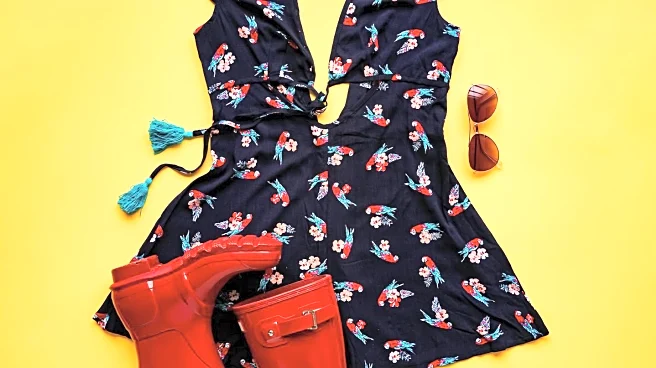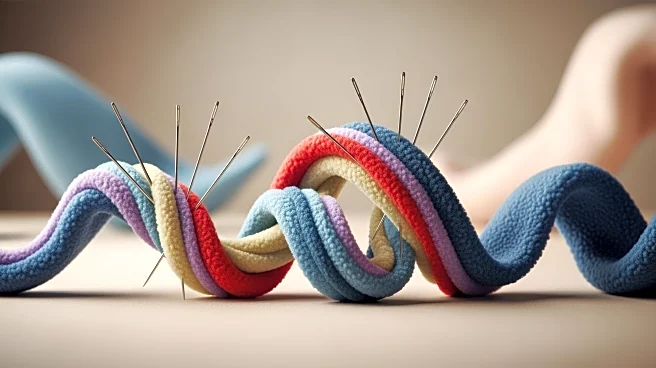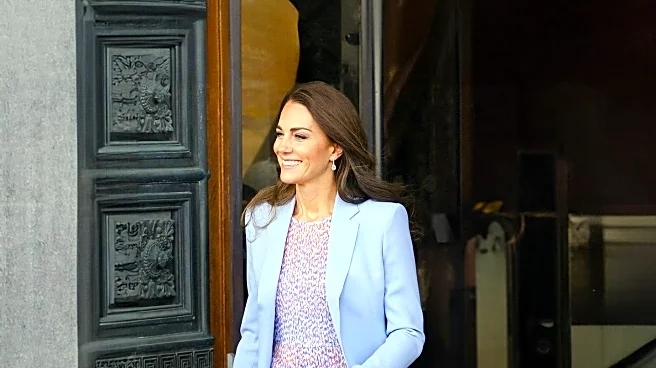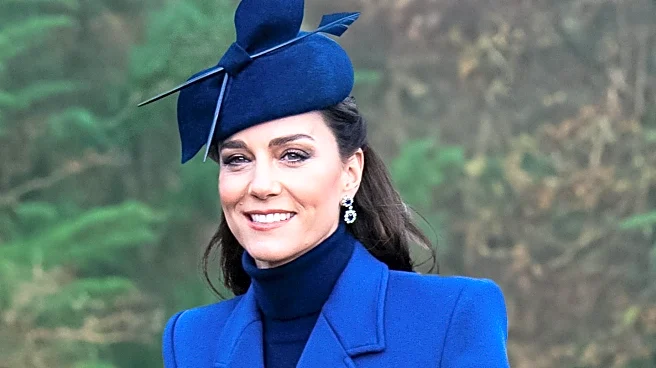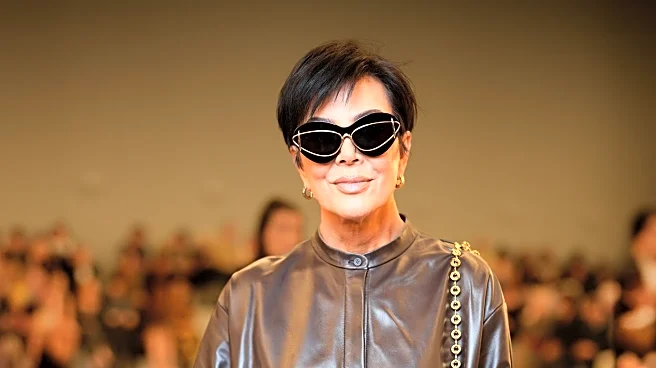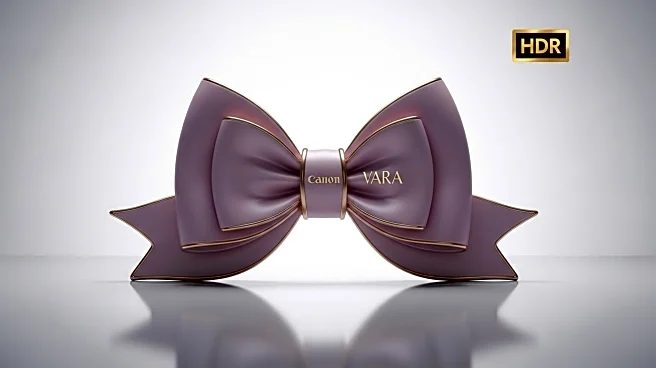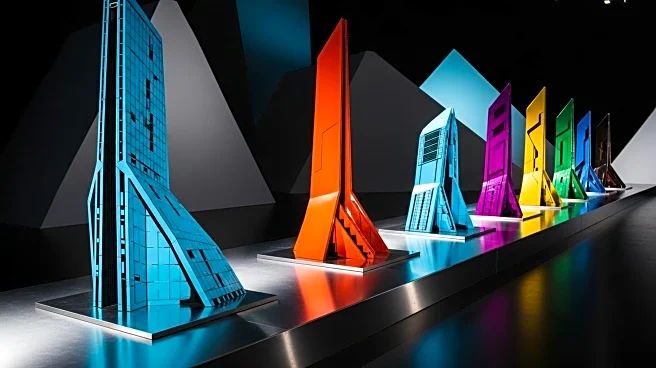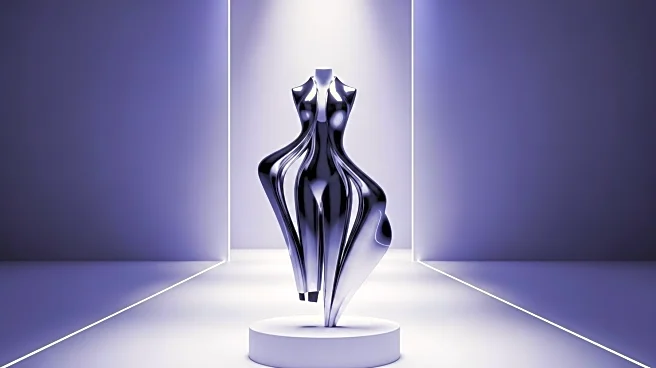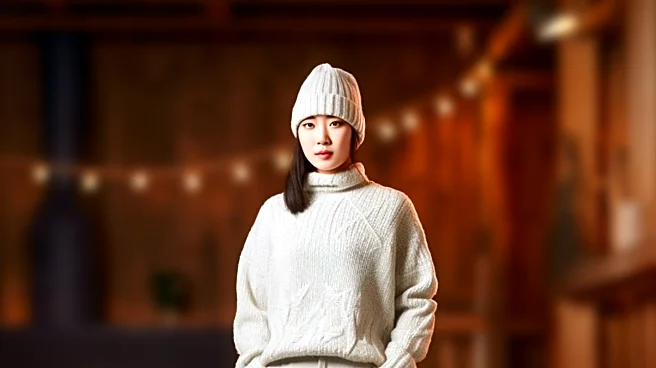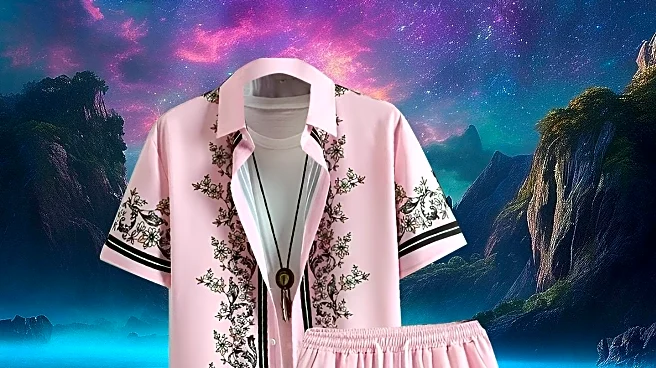What's Happening?
The Spring 2026 fashion season is marked by a blend of traditional and avant-garde styles, as designers explore themes of uniform dressing and Rococo flourishes. The trend report highlights the use of printed foulard scarves and supportive materials like wires and tulle to create garments that defy gravity. Designers are also experimenting with pajama-inspired dresses made from sheet-like white cotton, offering a casual elegance. The season features 15 designer debuts, focusing on imaginative transportive clothing, such as loose jupe-culottes and balloon-legged pants. Collections also include transparent bottoms and exposed bras, catering to both bold and subtle fashion preferences. Influences from historical figures like Marie Antoinette and Daisy Buchanan are evident, alongside military references and shades of khaki, challenging traditional notions of uniform dressing.
Why It's Important?
The Spring 2026 fashion trends reflect a period of late-stage postmodernism, where change is gradual and heritage houses remix past styles. This season's focus on uniform dressing and Rococo flourishes indicates a shift towards blending functionality with artistic expression. The revival of aprons and military-inspired attire suggests a commentary on female autonomy and societal roles, as fashion continues to mirror cultural and political dynamics. The emphasis on imaginative and transportive clothing offers consumers a form of escapism, allowing them to explore identity and self-expression through fashion. This trend may influence retail strategies and consumer behavior, as brands adapt to the evolving preferences of fashion-forward individuals.
What's Next?
As designers continue to explore themes of uniform dressing and Rococo flourishes, the fashion industry may see further experimentation with materials and silhouettes. The focus on imaginative transportive clothing could lead to collaborations with artists and cultural influencers, expanding the reach of these trends. Retailers may adjust their offerings to cater to the demand for both bold and subtle fashion choices, impacting marketing strategies and product development. The ongoing dialogue around female autonomy and societal roles may inspire future collections that challenge traditional norms and promote inclusivity. Fashion weeks and industry events will likely showcase these evolving trends, influencing global fashion narratives.
Beyond the Headlines
The Spring 2026 fashion trends highlight deeper cultural and societal implications, as designers navigate themes of autonomy and identity. The revival of historical influences and military references suggests a reflection on past and present societal structures. The emphasis on imaginative transportive clothing offers a form of escapism, allowing individuals to explore new identities and narratives through fashion. This trend may contribute to broader discussions on gender roles and cultural expression, as fashion continues to serve as a platform for social commentary. The industry's response to these themes could shape future design philosophies and consumer engagement strategies.


